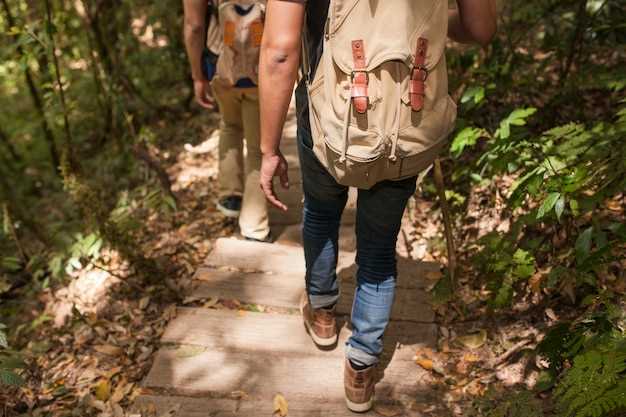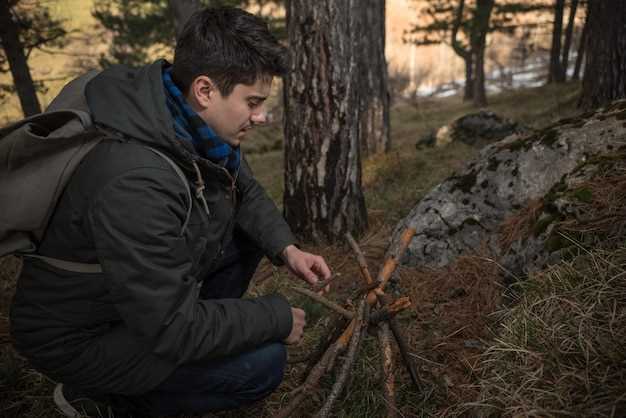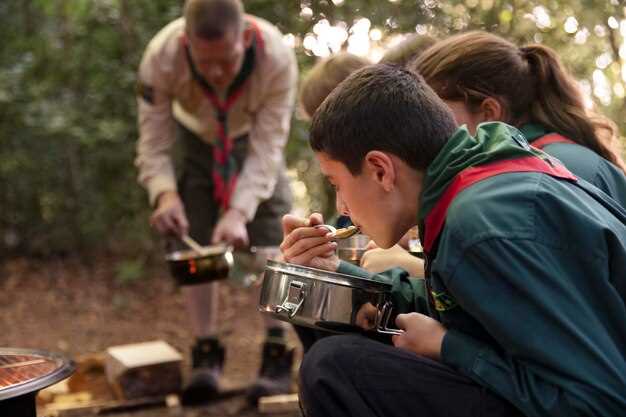
Embarking on my first wilderness trek was an experience that tested not only my physical limits but also my mental resilience. As I prepared for this adventure, I meticulously researched and selected my gear, ensuring that I had everything from durable footwear to efficient camping tools. However, no amount of preparation could fully shield me from the challenges that lay ahead.
As the trek commenced, I quickly learned that even the best gear could fail in unexpected ways. One of my hiking boots, which I had deemed suitable for rugged terrain, started to give me blisters within the first few hours. This early setback forced me to confront the reality of my situation–no preparation can account for every twist and turn encountered in the wilderness.
This expedition was more than just a journey through nature; it became a profound lesson in adaptability and perseverance. Each obstacle faced taught me invaluable insights about self-reliance and the importance of choosing quality equipment that can withstand the unpredictability of the wild. Through the discomfort and challenges, I discovered that true success lies not in a flawless experience but in the ability to rise above failures and continue moving forward.
Choosing the Right Gear for Your Wilderness Trek
When preparing for a wilderness trek, selecting the appropriate gear is essential for ensuring endurance and success. The right equipment can make the difference between an enjoyable adventure and a challenging endeavor that may lead to failure.
Start with a sturdy backpack that fits comfortably and distributes weight evenly. Look for models designed for long treks, with padded shoulder straps and a hip belt to alleviate pressure. A proper fit allows for better endurance, enabling you to carry your gear without strain.
Footwear plays a critical role in your journey. Select hiking boots or shoes that provide adequate support, traction, and protection. Consider the terrain and weather conditions you will encounter. Well-fitted, moisture-wicking socks are also vital in preventing blisters.
Weather-appropriate clothing is a must. Opt for moisture-wicking base layers, insulating mid-layers, and breathable outer shells. Layering allows for flexibility in adapting to changing conditions. Be prepared for sudden weather shifts that can impact your trek.
Sleeping gear is another important aspect. A lightweight, insulating sleeping bag and a compact sleeping pad will enhance your comfort and recovery overnight. Ensure that your sleeping setup is suitable for the expected temperatures to maintain your energy levels during the expedition.
Navigation tools, such as a reliable map, compass, or GPS device, are crucial for staying on track. Familiarize yourself with these tools before your trek, as relying solely on technology can lead to failure if your device runs out of power.
Don’t forget essential safety gear, including a first-aid kit, multitool, and fire-starting equipment. These items can prove invaluable in case of emergencies and will enhance your overall confidence and endurance on the trail.
By carefully choosing the right gear for your wilderness trek, you not only prepare for the physical challenges ahead but also equip yourself with the means to fully enjoy the experience. Make informed choices to ensure your venture into nature is memorable and fulfilling.
How to Prepare for Gear Failures in the Field
When embarking on a wilderness trek, the risk of gear failure is a reality every adventurer must face. Proper preparation can be the difference between a minor inconvenience and a major setback. Here are essential strategies to help you cope with potential gear failures during your expedition.
- Thorough Gear Inspection: Before your trip, meticulously check all equipment. Pay special attention to:
- Ropes and lines for frays or knots.
- Pack zippers and seams for weakness.
- Waterproofing on tents and gear.
- Crisis Gear Kit: Prepare a small kit with essential repair items. Include:
- Duct tape for temporary fixes.
- Safety pins for clothing and gear.
- Multi-tool for various applications.
- Redundant Systems: When it comes to critical gear, always have a backup. Consider packing:
- Extra water filtration system.
- Spare flashlight or headlamp.
- Additional food and cooking equipment.
- Skills Development: Invest time in learning basic repair skills. Some useful skills include:
- How to mend a tent or tarp.
- Basic sewing techniques for clothing repairs.
- Simple maintenance on stoves and cooking gear.
- Emergency Plan: Formulate a strategy for gear failure scenarios. Be sure to:
- Identify the nearest exit point if major gear fails.
- Study your route for alternative navigation options.
- Communicate your plan with your group.
By implementing these strategies, you can minimize the impact of gear failures, allowing you to focus on enjoying your wilderness experience instead of worrying about unexpected challenges.
Building Physical Endurance for Long Treks

To successfully complete long treks, building physical endurance is essential. This process involves not only training your body but also selecting the right gear to support your endeavors. The combination of consistent training and appropriate equipment can make a significant difference in your overall experience.
Start with a Solid Base: Begin your endurance training by incorporating a mix of cardiovascular exercises into your routine. Activities like running, cycling, and swimming can boost your stamina. Aim for at least 30 minutes of moderate to vigorous exercise, three to five times a week.
Gradual Increase in Activity: Gradually increase the duration and intensity of your workouts. Start with shorter treks and slowly extend the distance. This progressive approach allows your body to adapt, reducing the risk of injury while enhancing your endurance levels.
Strength Training: In addition to cardio, strength training plays a vital role in endurance. Focus on core and leg exercises, such as squats, lunges, and planks. A strong core can enhance your balance and stability, essential for navigating uneven terrain.
Practice with Gear: Familiarize yourself with the gear you plan to use on your treks. Wearing a fully loaded backpack during training walks can help simulate the trek experience. This practice prepares your body for the added weight and improves your endurance when it matters most.
Nutrition and Hydration: Fueling your body with the right nutrition is crucial for endurance. Prioritize a balanced diet rich in carbohydrates, proteins, and healthy fats to maintain energy levels. Additionally, staying hydrated is critical, particularly during prolonged physical activity.
Rest and Recovery: Adequate rest is often overlooked in endurance training. Incorporate rest days into your routine to allow your muscles to recover and build strength. Consider activities like yoga or stretching to improve flexibility and prevent injuries.
Building Mental Endurance: Physical stamina is complemented by mental endurance. Prepare yourself for the psychological challenges of long treks by setting achievable goals and practicing mindfulness techniques. Visualization can also help in maintaining focus during strenuous moments.
In summary, building physical endurance for long treks requires a comprehensive approach that includes consistent training, familiarization with gear, proper nutrition, and adequate rest. By focusing on these key areas, you’ll be better equipped to tackle any wilderness expedition that comes your way.
Lessons Learned from My Gear-Related Challenges
Throughout my first wilderness trek, I encountered several challenges with my gear that offered valuable lessons and insights. These experiences highlighted the importance of endurance, preparation, and adaptability in outdoor adventures.
One of the significant challenges I faced was related to my backpack. Initially, I underestimated the importance of selecting a pack that fit my body size and shape. The discomfort from an ill-fitting backpack quickly turned my trek into a struggle, testing my physical endurance and mental resolve. I learned that investing time in finding gear that complements one’s physique can make a substantial difference in the overall experience.
Another area where I faced difficulties was with my footwear. Choosing the wrong pair of hiking boots resulted in blisters and foot pain. This situation not only slowed my pace but also affected my morale, proving that proper footwear is critical for sustaining endurance on long hikes. I realized that trying boots on in-store, checking for comfort, and ensuring they are broken-in before the journey can help avoid such failures.
Furthermore, I encountered issues with my cooking equipment. My stove malfunctioned due to inadequate maintenance, which meant I couldn’t prepare hot meals. This experience taught me that reliability is essential; testing gear thoroughly before the expedition can prevent potential failures that impact nutrition and energy levels. I learned to prioritize a backup cooking method to ensure sustenance during unforeseen circumstances.
Throughout my trek, I also faced technical challenges with my navigation tools. My GPS device ran out of battery, and I found myself relying on traditional maps and compasses. This experience reinforced the need for redundancy in gear. Always carrying spare batteries or alternative navigation methods can prevent situations that might lead to getting lost, thus compromising safety and endurance.
| Challenge | Lesson Learned |
|---|---|
| Packing | Invest in gear that fits and suits your body type. |
| Footwear | Choose well-fitted and broken-in boots to prevent discomfort. |
| Cooking Equipment | Ensure reliability and have a backup method for food preparation. |
| Navigation Tools | Carry spare batteries and alternative navigation methods. |
These lessons became invaluable as I continued my journey in the wilderness. Each gear-related challenge taught me the importance of thorough preparation and an adaptable mindset. Embracing these challenges ultimately contributed to a more rewarding and enriching trekking experience.
Navigating Mental Toughness During Difficult Moments
During my first wilderness trek expedition, I encountered numerous challenges that tested my mental toughness. The moments of struggle often felt overwhelming and threatened to make me feel like I might fail. However, I learned that mental resilience is built through endurance and the ability to persevere when faced with adversity.
Recognizing that discomfort is a part of any expedition was crucial. There were times when fatigue set in, and my mind began to waver. In these moments, I discovered strategies to push through the mental barriers. One effective technique was focusing on my breathing. By centering myself and taking deep, intentional breaths, I could calm my racing thoughts and regain my focus.
Another essential factor was reframing negative thoughts. Instead of viewing obstacles as insurmountable, I began to see them as opportunities to grow stronger. Each difficult stretch of trail became a test of endurance, and I realized that overcoming these hurdles only added to my sense of accomplishment.
Setting small, achievable goals during the trek also contributed to my mental toughness. By breaking down the journey into manageable tasks, I reduced the overwhelming nature of the entire expedition. Celebrating these small victories kept my spirits high and motivated me to continue pushing forward.
In addition, connecting with fellow trekkers proved invaluable. Sharing experiences and encouraging one another created a supportive environment that fostered collective resilience. Knowing that I was not alone in my struggles made a significant difference in my ability to cope with challenging moments.
Ultimately, navigating mental toughness during my wilderness expedition taught me that endurance is as much a mental exercise as it is a physical one. Embracing the journey, confronting fear, and seeking support formed the foundation of my resilience, enabling me to thrive even in the face of adversity.
Strategies for Recovery After a Demanding Expedition

Post-expedition recovery is essential for regaining strength and preparing for future adventures. The first step is to assess and clean your gear properly. Ensuring that your equipment is in good condition will not only prolong its lifespan but also enhance your safety for upcoming treks. After cleaning, store it correctly to prevent any damage.
Hydration plays a crucial role in recovery; it helps to replenish lost fluids and aids in muscle repair. Consume plenty of water, and consider electrolyte-rich drinks, especially after demanding activities that require high endurance levels.
Rest should be prioritized following a strenuous expedition. Allow your body adequate time to recuperate. This includes both sleep and relaxation, which are vital for muscle recovery and overall health. Listen to your body–if you feel fatigued, give yourself permission to rest.
Incorporating light physical activity into your recovery routine can facilitate healing. Engage in gentle stretching or walking to promote circulation without exerting too much pressure on your muscles. Gradually reintroduce more intense exercises as your endurance improves.
Nutrition is another critical aspect of recovery. Focus on consuming balanced meals rich in protein, healthy fats, and carbohydrates to fuel muscle repair and restore energy levels. Foods like lean meats, whole grains, fruits, and vegetables should be featured in your post-expedition diet.
Finally, consider mindfulness practices such as yoga or meditation to alleviate mental fatigue. The psychological demands of a trek can be just as taxing as the physical aspects, so taking care of your mind is equally important for complete recovery.
